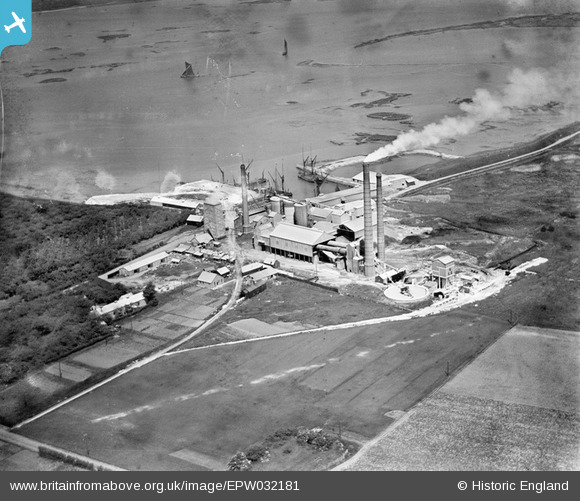EPW032181 ENGLAND (1930). British Standard Cement Works, Rainham, 1930
© Copyright OpenStreetMap contributors and licensed by the OpenStreetMap Foundation. 2025. Cartography is licensed as CC BY-SA.
Details
| Title | [EPW032181] British Standard Cement Works, Rainham, 1930 |
| Reference | EPW032181 |
| Date | May-1930 |
| Link | |
| Place name | RAINHAM |
| Parish | |
| District | |
| Country | ENGLAND |
| Easting / Northing | 582197, 167484 |
| Longitude / Latitude | 0.61822539327696, 51.376631813249 |
| National Grid Reference | TQ822675 |
Pins

Dylan Moore |
Friday 19th of October 2012 04:30:03 PM | |

Dylan Moore |
Friday 19th of October 2012 04:29:18 PM | |

Dylan Moore |
Friday 19th of October 2012 04:28:50 PM | |

Dylan Moore |
Friday 19th of October 2012 04:28:06 PM | |

Dylan Moore |
Friday 19th of October 2012 04:27:17 PM | |

Dylan Moore |
Friday 19th of October 2012 04:26:15 PM | |

Dylan Moore |
Friday 19th of October 2012 04:25:30 PM | |

Dylan Moore |
Friday 19th of October 2012 04:24:28 PM | |

Dylan Moore |
Friday 19th of October 2012 04:23:25 PM | |

Dylan Moore |
Friday 19th of October 2012 04:22:31 PM | |

Dylan Moore |
Friday 19th of October 2012 04:22:04 PM | |

Dylan Moore |
Friday 19th of October 2012 04:21:39 PM | |

Dylan Moore |
Friday 19th of October 2012 04:21:01 PM | |

Dylan Moore |
Friday 19th of October 2012 04:20:34 PM | |

Dylan Moore |
Friday 19th of October 2012 04:19:32 PM | |

Dylan Moore |
Friday 19th of October 2012 04:18:54 PM |
User Comment Contributions
The British Standard cement plant (sometimes referred to as Rainham Works, but not to be confused with the plant at Rainham, Essex) was established by E J & W Goldsmiths and started up in 1913. It was acquired by the Red Triangle group in 1928, and following the collapse of the latter in 1931 was taken over by APCM and promptly shut. The sole method of transport was shallow-draught river barge. For details, history and many links, see [[http://www.cementkilns.co.uk/cement_kiln_british_standard.html]]. |

Dylan Moore |
Saturday 8th of February 2014 05:47:57 PM |
Hi Dylan, It's great having your pins that label the parts of these works. Rather than looking at an "industrial building", the annotations help to explain all the different parts of the complex process. It's so easy to take a ubiquitous product like cement for granted; but in fact it's a really important part of our lives. Have you thought of using the Wiki section for these images, to write something more extensive about the works? Yours, Katy Britain from Above Cataloguing Team Leader |
Katy Whitaker |
Wednesday 31st of October 2012 10:29:36 AM |
Since the details of a cement plant are easily recognisable to an expert in cement manufacture, it would be easy to add a great many more “pins” to this and other photographs. I made the mistake of adding the link in my comment, not realizing that the site unaccountably diverts the link to Wikipedia. I hope Wikipedia don’t mind being importuned in this way! However, seriously, users of Britain From Above who want to know about this site should paste “http://www.cementkilns.co.uk/cement_kiln_british_standard.html” into their browser. Further information in the form of a simplified description of the process used at this plant in 1930 is on “http://www.cementkilns.co.uk/bs_desc.html”. Regarding the use of a “Wiki” page – the trouble with wikis is that ANYONE can edit them! People all over the world use the internet, and the majority of them – I hope! – would prefer that what they find there is authoritative. I hope it’s English Heritage’s policy to move in that direction with this site. |

Dylan Moore |
Saturday 8th of February 2014 05:47:57 PM |


![[EPW032181] British Standard Cement Works, Rainham, 1930](http://britainfromabove.org.uk/sites/all/libraries/aerofilms-images/public/100x100/EPW/032/EPW032181.jpg)
![[EPW032180] British Standard Cement Works and environs, Rainham, 1930](http://britainfromabove.org.uk/sites/all/libraries/aerofilms-images/public/100x100/EPW/032/EPW032180.jpg)
![[EPW032179] British Standard Cement Works and environs, Rainham, from the south-east, 1930](http://britainfromabove.org.uk/sites/all/libraries/aerofilms-images/public/100x100/EPW/032/EPW032179.jpg)